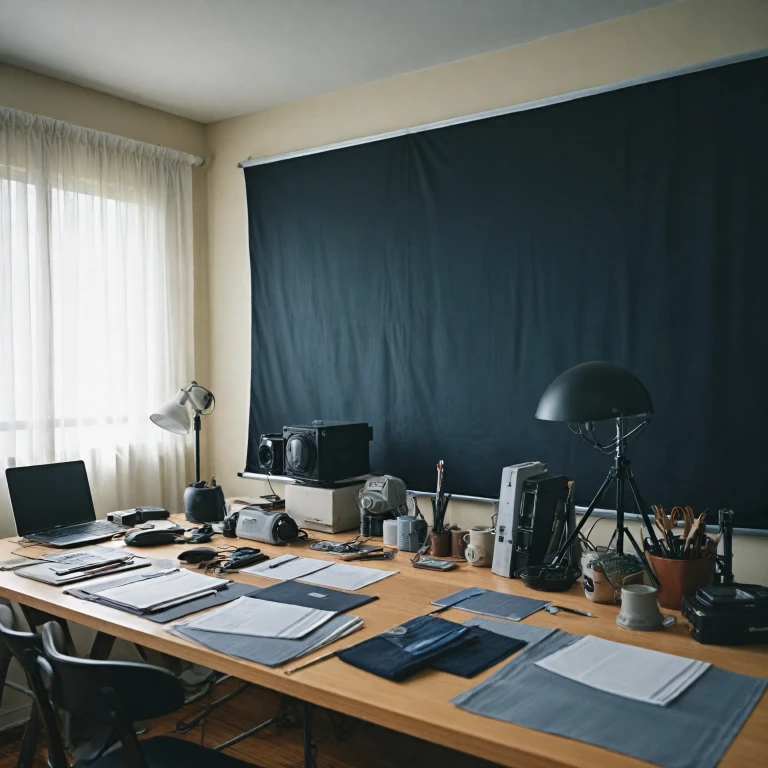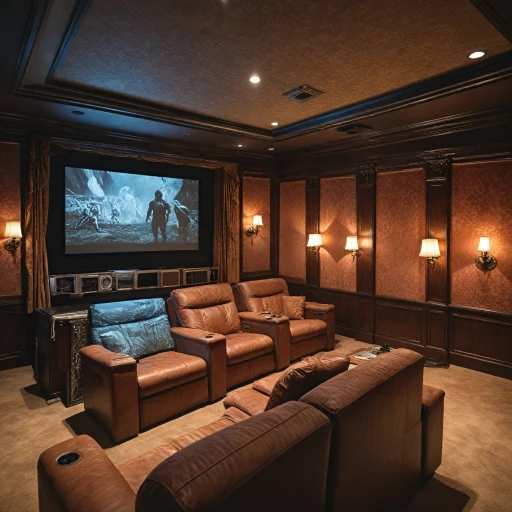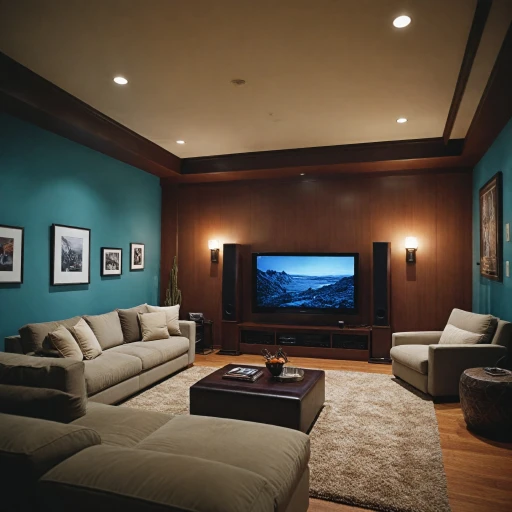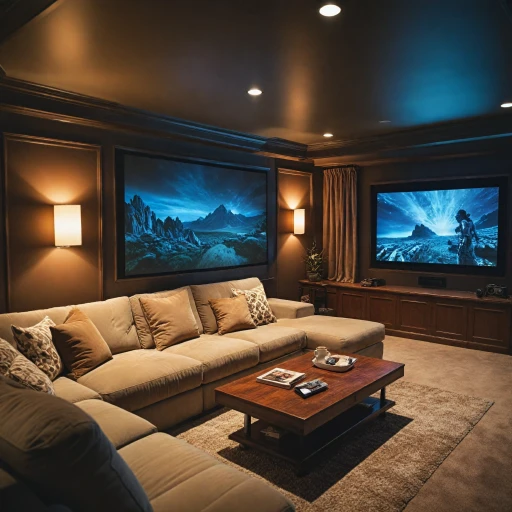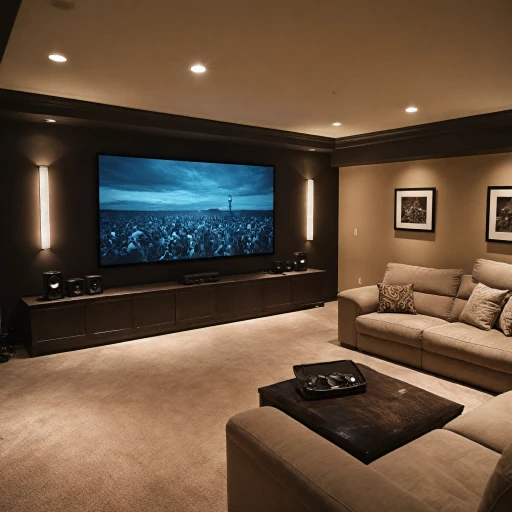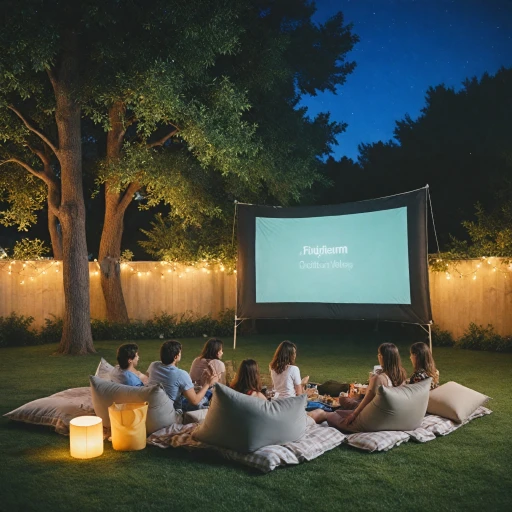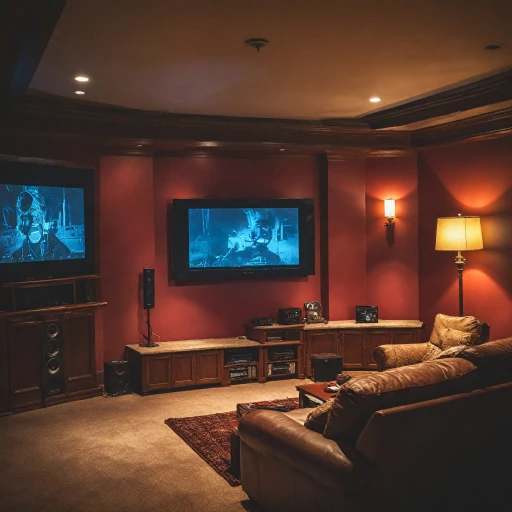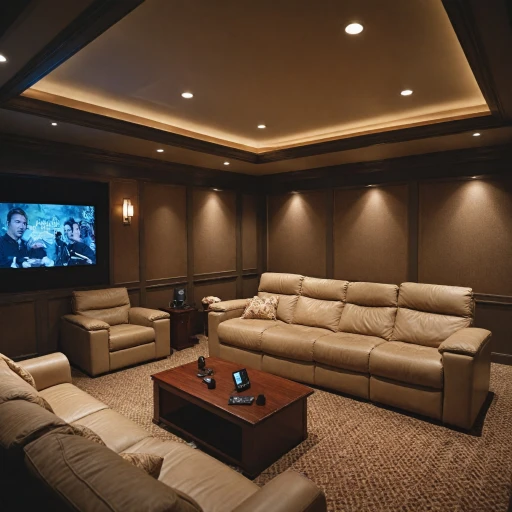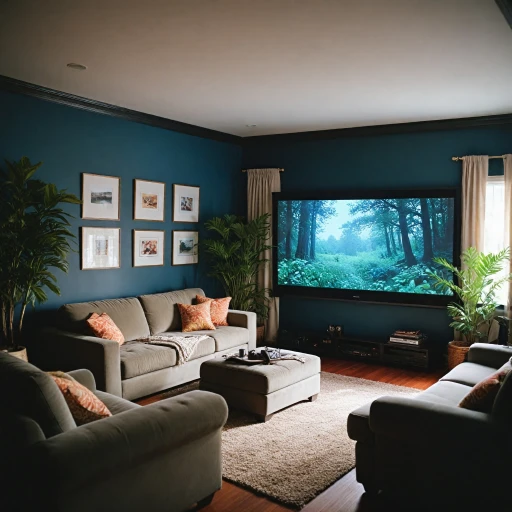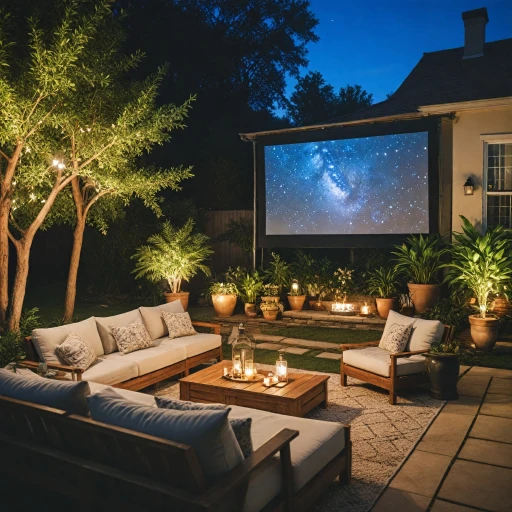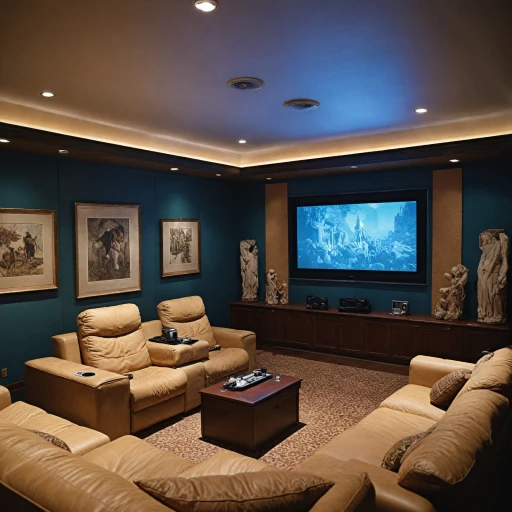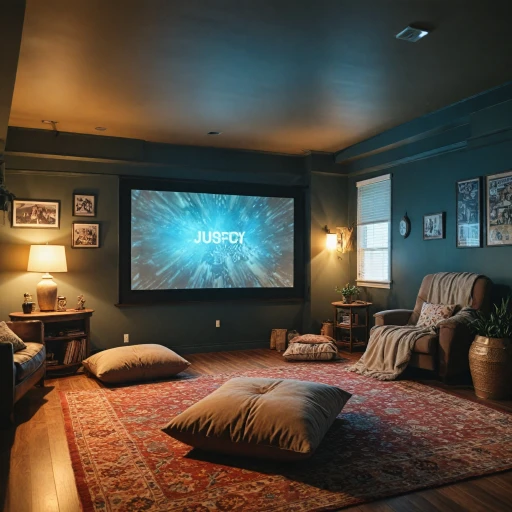
Understanding Blackout Fabric
Getting to Know Blackout Fabric
When it comes to creating an ideal projector setup, understanding the key components is crucial. One such component is the blackout fabric for your projector screen. This specialized cloth is designed to enhance your viewing experience by blocking out ambient light, allowing clearer and brighter projections.
Blackout fabric is often utilized for its ability to provide a better projection surface compared to regular screen materials. The fabric, typically heavy duty, ensures that no unwanted light interference spoils your movie nights or presentations. Whether you're working with a fixed frame or an inflatable movie screen setup, the choice of fabric can affect the quality of the projected image significantly.
Not only is this material essential for maintaining image quality, but it also offers distinct advantages such as versatility and affordability. By investing in the right blackout material, you can elevate your outdoor movie nights or indoor viewings with enhanced clarity and contrast.
Another important feature of blackout fabric is its ability to offer privacy and block light from doors or windows. This characteristic is particularly beneficial in multi-purpose rooms, providing a more controlled environment for projection.
Whether you are buying a portable screen or planning a DIY project, having knowledge about blackout fabric and its applications will guide you in selecting the right product, helping you save on costs while achieving superior visuals in your setup.
Benefits of Blackout Fabric for Projector Screens
Unmatched Edge in Light Blocking
When it comes to curating a phenomenal home theater experience, blackout fabric stands out with its superior light-blocking capabilities. A key advantage of opting for blackout material is its ability to entirely block out light, unlike traditional screens and fabrics. This is particularly beneficial if your projector setup is in a room that isn't entirely window-free. Whether it's natural daylight streaming through a window or stray beams from a door, blackout fabrics ensure that light interference is a non-issue. This ensures you maintain pristine image quality and don’t contend with washed-out colors or diminished contrast.
Cost-Efficiency and Versatility
Besides its technical superiority, blackout fabric is surprisingly economical, making it a wise investment for projector enthusiasts. Compared to pricier, specialized screens, it offers a great deal in terms of price per inch of coverage, allowing you to enjoy cinematic experiences at home without breaking the bank. Moreover, blackout curtains and fabric are versatile enough to be used creatively around your setup, serving as a privacy screen or even as improvised blackout curtains to enhance your projection environment.
Precision in Indoor and Outdoor Settings
Beyond indoor applications, blackout fabric serves well in outdoor environments too. As many opt for outdoor setups with an inflatable movie screen, this fabric can serve as a viable backdrop to ensure ambient light doesn't diminish your viewing pleasure. The material is easily portable, enabling you to set up quickly and precisely, whether it’s a permanent fixed frame or a portable unit catering to those spontaneous outdoor gatherings under the stars.
Types of Blackout Fabric
Exploring Different Styles of Blackout Screen Materials
When choosing the best screen material for your home theater projector setup, considering various types of blackout fabric is essential. Each type offers distinct characteristics that may influence your viewing experience, screen performance, and overall presentation. Firstly, there's the traditional blackout cloth, which is a popular choice among enthusiasts for its budget-friendly price and efficient light-blocking capability. It's often used in environments where control over ambient light is crucial. This type of fabric clothes screens effectively and can enhance image quality, ensuring that the black and white levels are true to the source. Another option is the heavy-duty blackout curtains. These are typically used in rooms where light control is combined with a need for privacy. Choosing portable blackout curtains can be a smart move if you desire flexibility. They're perfect for those on the move or for settings where a permanent installation isn't possible. Privacy screens employing blackout fabric are an innovative choice, especially useful in multifunctional spaces. They allow the space to transform from a casual room to a dedicated viewing area in seconds. Moreover, inflatable movie screens crafted with blackout materials offer a fun approach, especially for outdoor gatherings. Products like vevor inflatable screens blend portability with a substantial display surface, creating an engaging movie screen environment without the hassle of traditional fixed frame installations. In conclusion, selecting the right blackout fabric impacts both the performance and the price you're willing to pay. Whether you're interested in a DIY projection screen or a portable option for your needs, understanding the distinctions between different blackout materials is key to making an informed decision.Installation Tips for Blackout Fabric Screens
Step-by-Step Setup Guide for Your Home Theater
When it comes to setting up a projector screen with blackout fabric, some steps ensure that both the quality and durability are maximized. This is crucial if you're aiming for a superior image quality in your customized home theater. Here’s a streamlined list to help you get started:- Measure Your Space: Begin by determining the exact dimensions needed for your screen. Consider factors like the size and dimensions of the room, the projector’s throw distance, and whether you’re opting for a fixed frame or a more portable setup. Planning this out can save you from purchasing excess fabric, hence saving on price.
- Choosing the Right Tools: For a seamless installation, gather the required tools such as scissors, a tape measure, and a staple gun. If installing over a window or door, blackout curtains can also be beneficial additions.
- Mounting Heavy Duty Fabric: If you’re using heavy-duty blackout fabric, ensure it’s securely mounted. Stretch the fabric over the frame ensuring it's taut, but not overly stretched to prevent tearing. Anchoring it with staples or clips can keep it in place.
- Optimize Ambient Light Conditions: Position your screen to minimize ambient light reaching the fabric. This is vital in preserving the black levels essential for rich projector image outputs, analogous to the deep hues visible against the black sky during star-studded movie nights.
- Trim and Final Touches: After installing, trim any excess fabric for a clean look. Double-check that the fabric is evenly distributed across the frame to avoid creases that could distort the projection.
Comparing Blackout Fabric to Other Screen Materials
Weighing Blackout Fabric Against Alternative Materials
When it comes to setting up a home theater, the choice of projector screen material is crucial to achieving the best image quality and overall viewing experience. Blackout fabric stands out as an excellent option compared to other materials due to several reasons. First, blackout fabric offers an affordable price point, making it a smart choice for those looking to save without compromising on quality. In contrast, options like fixed frame or heavy-duty screens can be significantly more expensive. Using blackout fabric as your screen material is a deal you wouldn't want to miss, especially if you're on a budget. Another competitive advantage is its ability to block out ambient light effectively. This is particularly beneficial if your home theater setup is in a room with windows or a screen door where light could potentially seep through. Blackout fabric essentially functions like blackout curtains, creating an excellent projection surface by keeping undesired light out. For portability, blackout fabric is an ideal selection. It can easily transition from being a privacy screen to a portable movie screen. Unlike a bulky fixed frame, this flexible nature of blackout cloth means you could even consider it for an inflatable movie setup. Think about transforming a vevor inflatable option into an incredible movie night experience. Blackout fabric also tends to offer a neutral color, often in shades of white or black, which allows your projector to deliver vivid colors and maintain a high contrast ratio. This feature dramatically enhances image quality when compared to less specialized materials. Finally, for those who prefer the convenience of DIY setups, the blackout fabric is highly accessible. You can measure custom sizes, allowing for any desired width, such as inch-wide configurations to perfectly fit your room dimensions or custom-design areas such as over a door. In summary, while there are many materials available for projector screens, blackout fabric delivers a combination of cost efficiency, light-blocking capability, portability, and image quality that other materials may not match. Thus, it remains a highly recommended option for both seasoned and novice home theater enthusiasts.Maintenance and Care for Blackout Fabric Screens
Essential Care to Prolong the Life of Your Blackout Fabric Screens
Preserving the quality of your blackout fabric projector screen is crucial to both preserving the quality of your movie nights and maintaining ambient light control. Here are some tips to help you care for your screen effectively:
- Regular Cleaning: Dust and dirt can accumulate on any screen, including blackout fabric. Gently brush off any debris with a soft cloth. For stubborn stains, a damp, lint-free cloth with mild soap can be used. Make sure to dry thoroughly.
- Avoid Direct Sunlight: Prolonged exposure to sunlight can fade the rich black color of blackout cloth. Positioning your projector screen in a way that avoids direct light can help preserve its original appearance.
- Handle with Care: Always be cautious when setting up or taking down portable screens, particularly inflatable movie screens and fixed frame projector screens. Heavy duty products should still be handled with care to avoid tears.
- Proper Storage: When not in use, it's important to store your projector screen in a protective case or sleeve. This helps prevent dust accumulation and accidental damage.
- Regular Inspection: Check the screen for any signs of wear and tear or damage. Early detection allows you to make minor repairs that can save you from more expensive fixes later.
Following these tips not only adds to the durability of the blackout cloth but also maintains the screen's image quality over time. Keeping your projection screen clean and well-maintained enhances the viewing experience, ensuring that every movie night is as enjoyable as the last. By taking the time to care for your screens, you might also save money, avoiding the need for frequent replacements, which is always a great deal in the long run.
